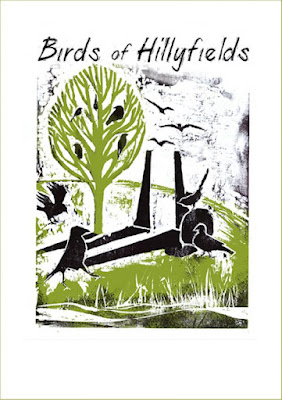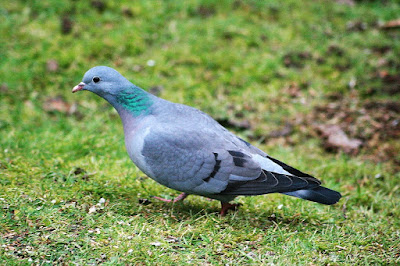Thanks to whoever shared this photograph on the Cliffview Road WhatsApp group last month. It shows a male sparrowhawk sitting on a fence in one of the gardens that back onto Hilly Fields. If you look closely, you can see a mouse or vole held between its talons. Proof that these marvellous birds of prey do prey in the gardens that border our park. And that they don't just prey on sparrows as their name suggests.
We have a similar photograph of a male sparrowhawk in our Birds of Hilly Fields booklet along with the following description: 'A woodland predator, it has evolved great skill in flying fast around and between trees and usually succeeds in catching prey through the element of surprise. Its extra long toes also help to catch birds in flight. The male is smaller than the female and has a less fierce, almost dopey look. It has a reddish barred chest and grey back, whereas the female has grey-brown barring to the chest, a white stripe over the eye and brown back.' This photo was taken in 2015 by Keith Ward in his Cliffview Rd back garden.
Our booklet has sold well, but copies are still available from the Hilly Fields cafe or online from https://supportmylocal.org/store/rachel-mooney/ where you can either buy it alone for £3.50 or in various deals with tote bags and other items. Ideal gifts for Christmas and all profits go to the Friends of Hilly Fields.
At the moment, the RSPB still intends to hold their annual Big Garden Birdwatch event at the end of January: 'Simply count the birds you see in your garden, from your balcony or in your local park between 28 and 30 January 2022.' Last year we had to cancel our Big Birdwatch event, but hopefully we will be able to hold it again on Hilly Fields on Sunday 30 January with the usual display table outside the cafe, ID sheets, activities for kids and a guided walk. More details next month.





